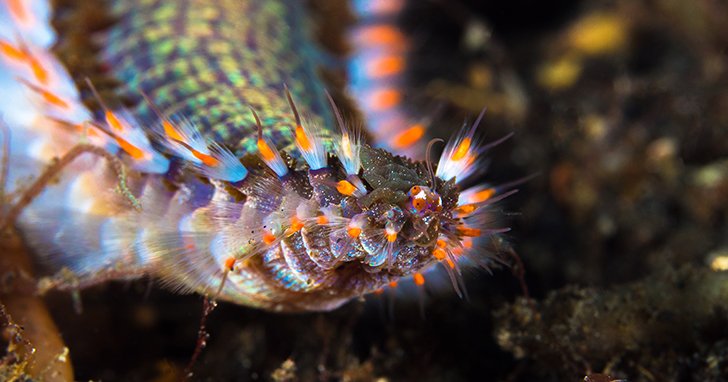
Bristle worms, often found lurking in the nooks and crannies of a thriving reef tank, can be both intriguing and intimidating. You might be wondering if they’re harmless little critters or if they have the potential to wreak havoc on your precious live rock and beautiful corals. Let’s dive into this fascinating topic and shed some light on whether these worms are friends or foes in your aquarium ecosystem.
What Are Bristle Worms?
Bristle worms belong to a group of segmented worms known as polychaetes. To picture them, think of a tiny, squirming creature resembling a mix between a caterpillar and a tiny snake. They can vary in color, usually brown or green, and have bristles—hence the name! The bristles are actually tiny, hair-like structures called chaetae that can help them move and dig into different substrates.
These worms often come out at night, scavenging for leftover food and organic debris. For many aquarium enthusiasts, they’re seen as a *natural cleanup crew*. However, not everyone shares the same enthusiasm. Some hobbyists worry about their rapid reproduction and potential to harm delicate coral species.
Are All Bristle Worms Harmful?
Not all bristle worms are created equal. Some species can be quite beneficial to your tank. They help break down waste and clean up uneaten food, which can contribute to a healthier environment. However, there are also larger species that can exhibit predatory behaviors.
Here’s the thing: if you’re dealing with a typical reef setup, smaller bristle worms are usually harmless. But if you notice an explosion in their population, it might indicate an underlying issue—like overfeeding or organic buildup in your tank. Keeping their numbers in check is key to maintaining balance.
How Do Bristle Worms Interact with Live Rock?
When it comes to live rock, bristle worms tend to find a cozy home. They burrow into crevices, which can actually aid in keeping the rock clean. As they roam around looking for food, they help to aerate the rock and promote beneficial microbial activity.
However, if their population swells uncontrollably, they might start to compete with other organisms for resources. This could potentially lead to stress for coral species, especially those that are sensitive. Imagine a crowded cafe—if it’s too packed, no one gets served properly.
Signs of Damage to Live Rock
If you’re worried about bristle worms damaging your live rock, look out for these signs:
- Increased algal growth: Overpopulation of bristle worms can indicate nutrient imbalances, leading to unsightly algae blooms.
- Coral stress: If your corals are looking retracted or bleached, it might be a sign of competition or predation.
- Visible damage: Check for any noticeable bite marks or erosion on the rock surfaces.
If you notice these signs, it might be time to evaluate your tank’s health and take steps to manage the bristle worm population.
Do Bristle Worms Eat Corals?
You might be asking, “Can bristle worms actually eat corals?” The answer is a bit complex. While they don’t typically target healthy corals as a food source, they can still pose a threat in specific situations. For example, if a coral is already stressed or dying, bristle worms may munch on the decaying tissue. It’s a bit like scavengers feasting on something that’s already fallen.
In healthy conditions, bristle worms focus on detritus rather than living organisms. But if you notice them making a meal out of your corals, it’s usually a sign that something is off in your tank—possibly inadequate water quality or other stress factors.
How to Manage Bristle Worm Populations
If you find yourself overwhelmed with bristle worms, don’t panic! Here are some effective ways to manage their population:
- Reduce overfeeding: If you’re feeding your fish too much, it can lead to an excess of food that bristle worms thrive on. Try feeding less often or in smaller portions.
- Use traps: There are traps designed specifically for catching bristle worms. Setting one up can help keep their numbers in check.
- Introduce predators: Some fish species enjoy snacking on bristle worms. Look into adding fish like hawkfish or certain wrasses that may naturally keep their populations lower.
By taking these steps, you can maintain a healthy balance in your aquarium without resorting to drastic measures.
Alternatives to Bristle Worms for Cleanup
If you’re concerned about bristle worms and their potential impact, there are alternatives you can consider for your cleanup crew.
For example, you might try using:
- Snails: Many species of snails, like turbo or nerite snails, help control algae and clean your tank without the issues that bristle worms can bring.
- Cleaner shrimp: They not only help keep your tank clean but can also add some character and charm with their lively movements.
- Crabs: Certain crab species, such as emerald crabs, can assist in keeping algae at bay and scavenging for leftover food.
These alternatives can provide the benefits of a cleanup crew without the worries that can come with bristle worms.
In the end, bristle worms can be both a blessing and a curse. While they can help keep your tank clean, an overpopulation can lead to issues with live rock and corals. Keeping an eye on their numbers and ensuring your aquarium environment is healthy will go a long way in preventing any damage.
Whether you choose to embrace them as part of your tank or look for alternatives, the key is balance. By staying informed and proactive, you can create a thriving underwater environment that showcases the beauty of your live rock and corals without the worry of unwanted guests. Remember, every tank is different, so find what works best for your setup and enjoy the journey!
